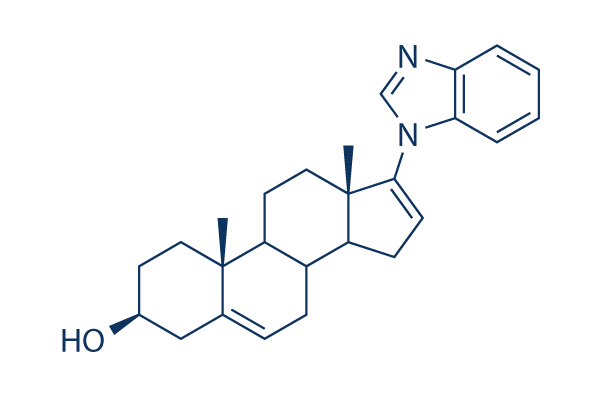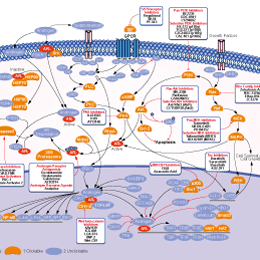
- Bioactive Compounds
- By Signaling Pathways
- PI3K/Akt/mTOR
- Epigenetics
- Methylation
- Immunology & Inflammation
- Protein Tyrosine Kinase
- Angiogenesis
- Apoptosis
- Autophagy
- ER stress & UPR
- JAK/STAT
- MAPK
- Cytoskeletal Signaling
- Cell Cycle
- TGF-beta/Smad
- DNA Damage/DNA Repair
- Compound Libraries
- Popular Compound Libraries
- Customize Library
- Clinical and FDA-approved Related
- Bioactive Compound Libraries
- Inhibitor Related
- Natural Product Related
- Metabolism Related
- Cell Death Related
- By Signaling Pathway
- By Disease
- Anti-infection and Antiviral Related
- Neuronal and Immunology Related
- Fragment and Covalent Related
- FDA-approved Drug Library
- FDA-approved & Passed Phase I Drug Library
- Preclinical/Clinical Compound Library
- Bioactive Compound Library-I
- Bioactive Compound Library-Ⅱ
- Kinase Inhibitor Library
- Express-Pick Library
- Natural Product Library
- Human Endogenous Metabolite Compound Library
- Alkaloid Compound LibraryNew
- Angiogenesis Related compound Library
- Anti-Aging Compound Library
- Anti-alzheimer Disease Compound Library
- Antibiotics compound Library
- Anti-cancer Compound Library
- Anti-cancer Compound Library-Ⅱ
- Anti-cancer Metabolism Compound Library
- Anti-Cardiovascular Disease Compound Library
- Anti-diabetic Compound Library
- Anti-infection Compound Library
- Antioxidant Compound Library
- Anti-parasitic Compound Library
- Antiviral Compound Library
- Apoptosis Compound Library
- Autophagy Compound Library
- Calcium Channel Blocker LibraryNew
- Cambridge Cancer Compound Library
- Carbohydrate Metabolism Compound LibraryNew
- Cell Cycle compound library
- CNS-Penetrant Compound Library
- Covalent Inhibitor Library
- Cytokine Inhibitor LibraryNew
- Cytoskeletal Signaling Pathway Compound Library
- DNA Damage/DNA Repair compound Library
- Drug-like Compound Library
- Endoplasmic Reticulum Stress Compound Library
- Epigenetics Compound Library
- Exosome Secretion Related Compound LibraryNew
- FDA-approved Anticancer Drug LibraryNew
- Ferroptosis Compound Library
- Flavonoid Compound Library
- Fragment Library
- Glutamine Metabolism Compound Library
- Glycolysis Compound Library
- GPCR Compound Library
- Gut Microbial Metabolite Library
- HIF-1 Signaling Pathway Compound Library
- Highly Selective Inhibitor Library
- Histone modification compound library
- HTS Library for Drug Discovery
- Human Hormone Related Compound LibraryNew
- Human Transcription Factor Compound LibraryNew
- Immunology/Inflammation Compound Library
- Inhibitor Library
- Ion Channel Ligand Library
- JAK/STAT compound library
- Lipid Metabolism Compound LibraryNew
- Macrocyclic Compound Library
- MAPK Inhibitor Library
- Medicine Food Homology Compound Library
- Metabolism Compound Library
- Methylation Compound Library
- Mouse Metabolite Compound LibraryNew
- Natural Organic Compound Library
- Neuronal Signaling Compound Library
- NF-κB Signaling Compound Library
- Nucleoside Analogue Library
- Obesity Compound Library
- Oxidative Stress Compound LibraryNew
- Plant Extract Library
- Phenotypic Screening Library
- PI3K/Akt Inhibitor Library
- Protease Inhibitor Library
- Protein-protein Interaction Inhibitor Library
- Pyroptosis Compound Library
- Small Molecule Immuno-Oncology Compound Library
- Mitochondria-Targeted Compound LibraryNew
- Stem Cell Differentiation Compound LibraryNew
- Stem Cell Signaling Compound Library
- Natural Phenol Compound LibraryNew
- Natural Terpenoid Compound LibraryNew
- TGF-beta/Smad compound library
- Traditional Chinese Medicine Library
- Tyrosine Kinase Inhibitor Library
- Ubiquitination Compound Library
-
Cherry Picking
You can personalize your library with chemicals from within Selleck's inventory. Build the right library for your research endeavors by choosing from compounds in all of our available libraries.
Please contact us at [email protected] to customize your library.
You could select:
- Antibodies
- Bioreagents
- qPCR
- 2x SYBR Green qPCR Master Mix
- 2x SYBR Green qPCR Master Mix(Low ROX)
- 2x SYBR Green qPCR Master Mix(High ROX)
- Protein Assay
- Protein A/G Magnetic Beads for IP
- Anti-Flag magnetic beads
- Anti-Flag Affinity Gel
- Anti-Myc magnetic beads
- Anti-HA magnetic beads
- Magnetic Separator
- Poly DYKDDDDK Tag Peptide lyophilized powder
- Protease Inhibitor Cocktail
- Protease Inhibitor Cocktail (EDTA-Free, 100X in DMSO)
- Phosphatase Inhibitor Cocktail (2 Tubes, 100X)
- Cell Biology
- Cell Counting Kit-8 (CCK-8)
- Animal Experiment
- Mouse Direct PCR Kit (For Genotyping)
- New Products
- Contact Us
Galeterone
Synonyms: TOK-001
Galeterone (TOK-001) is a selective CYP17 inhibitor and androgen receptor (AR) antagonist with IC50 of 300 nM and 384 nM, respectively, and is a potent inhibitor of human prostate tumor growth. Phase 2.

Galeterone Chemical Structure
CAS No. 851983-85-2
Purity & Quality Control
Batch:
Purity:
99.98%
99.98
Galeterone Related Products
| Related Products | EPI-001 Cyproterone Acetate 3,3'-Diindolylmethane Bavdegalutamide (ARV-110) | Click to Expand |
|---|---|---|
| Related Compound Libraries | FDA-approved Drug Library Natural Product Library Bioactive Compound Library-I Exosome Secretion Related Compound Library Human Hormone Related Compound Library | Click to Expand |
Signaling Pathway
Cell Data
| Cell Lines | Assay Type | Concentration | Incubation Time | Formulation | Activity Description | PMID |
|---|---|---|---|---|---|---|
| human PC3 cells | Function assay | Displacement of [3H]R1881 from androgen receptor in human PC3 cells, EC50=0.405 μM | 25591066 | |||
| human LNCaP cells | Function assay | 2 h | Displacement of [3H]R1881 from AR in human LNCaP cells after 2 hrs by scintillation counting analysis, EC50=0.67 μM | 23713567 | ||
| human CWR22Rv1 cells | Function assay | Induction of apoptosis in human CWR22Rv1 cells assessed as induction of PARP cleavage | 23713567 | |||
| human LNCAP cells | Function assay | 5 μM | 48 h | Down regulation of AR protein expression in human LNCAP cells at 5 uM after 48 hrs by DAPI staining-based immunocytochemical analysis | 23713567 | |
| Click to View More Cell Line Experimental Data | ||||||
Biological Activity
| Description | Galeterone (TOK-001) is a selective CYP17 inhibitor and androgen receptor (AR) antagonist with IC50 of 300 nM and 384 nM, respectively, and is a potent inhibitor of human prostate tumor growth. Phase 2. | ||||
|---|---|---|---|---|---|
| Targets |
|
| In vitro | ||||
| In vitro | Galeterone is effective at preventing binding of [3H]-R1881 to the mutant LNCaP AR (T877A) with IC50 of 845 nM. Galeterone inhibits the DHT-induced proliferation of LNCaP and LAPC4 cells in a dose-dependent manner with IC50 of 6 μM and 3.2 μM, respectively. [1] Galeterone also inhibits the binding of [3H]-R1881 to the T575A mutant AR in PC3 cells with IC50 of 454 nM. Galeterone potently inhibits the proliferation of LNCaP and LAPC4 cells in the absence of DHT stimulation with IC50 of 2.6 μM and 4 μM, respectively. Furthermore, Galeterone treatment increases the degradation rate of the AR in a dose-dependent manner. [2] Galeterone potently inhibits the growth of the androgen-independent cell lines PC-3 and DU-145 in a dose-dependent manner with GI50 of 7.82 μM and 7.55 μM, respectively. Galeterone induces the endoplasmic reticulum stress response resulting in down-regulation of cyclin D1 protein expression and cyclin E2 mRNA. [3] Galeterone effectively inhibits proliferation of HP-LNCaP and C4-2B cell lines with IC50 of 2.9 μM and 9.7 μM, respectively. Galeterone treatment at 1 μM effectively inhibits androgen receptor activation in LNCaP cells (50%) and HP-LNCaP cells (70%). Galeterone decreases activation of the androgen receptor in both LNCaP cells and HP-LNCaP cells with IC50 of 1 μM and 411 nM, respectively, and down-regulates androgen receptor protein expression by 50% after 24 hour of treatment. [4] Galeterone reduces AR protein and mRNA expression, antagonizes AR-dependent promoter activation induced by androgen, and significantly reduces the phospho-4EBP1 levels. [6] | |||
|---|---|---|---|---|
| Kinase Assay | In vitro assay of CYP17 | |||
| The in vitro CYP17 inhibitory activity of Galeterone is evaluated using rapid acetic acid releasing assay (AARA), utilizing intact P450c17-expressing E. coli as the enzyme source. It involves the use of [21-3H]-17α-hydroxypregnenolone as the substrate, and CYP17 activity is measured by the amount of tritiated acetic acid formed during the cleavage of the C-21 side chain of the substrate. IC50 value is obtained directly from plots relating percentage inhibition versus inhibitor concentration over appropriate ranges. | ||||
| Cell Research | Cell lines | LNCaP and LAPC4 | ||
| Concentrations | Dissolved in DMSO, final concentrations ~20 μM | |||
| Incubation Time | 7 days | |||
| Method | Cells are seeded in 24 well multi-well plates. Cells are treated with the increasing concentration of Galeterone in steroid free medium with or without 1 nM DHT (LNCaP), or 10 nM DHT (LAPC4) and allowed to grow for 7 days. The number of viable cells is compared by MTT assay (LAPC4) or XTT assay (LNCaP) on the 7th day. |
|||
| In Vivo | ||
| In vivo | Administration of Galeterone at 50 mg/kg twice daily is very effective at inhibiting the growth of androgen-dependent LAPC4 human prostate tumor xenograft, with a 93.8% reduction in the mean final tumor volume compared with controls, and it is also significantly more effective than castration. [1] Treatment of Galeterone (0.13 mM/kg twice daily) or Galeterone (0.13 mmol/kg twice daily) plus castration induces regression of LAPC4 tumor xenografts in SCID mice by 26.55% and 60.67%, respectively. Treatments with Galeterone or Galeterone plus castration causes marked reduction in AR protein of 10- and 5-fold, respectively. [2] | |
|---|---|---|
| Animal Research | Animal Models | Male severe combined immunodeficient (SCID) mice inoculated subcutaneously (s.c.) with LAPC4 cells |
| Dosages | 50 mg/kg | |
| Administration | Injection s.c. twice daily | |
| NCT Number | Recruitment | Conditions | Sponsor/Collaborators | Start Date | Phases |
|---|---|---|---|---|---|
| NCT02729376 | Completed | Healthy |
LTN PHARMACEUTICALS INC. |
March 2016 | Phase 1 |
Chemical Information & Solubility
| Molecular Weight | 388.55 | Formula | C26H32N2O |
| CAS No. | 851983-85-2 | SDF | Download Galeterone SDF |
| Smiles | CC12CCC(CC1=CCC3C2CCC4(C3CC=C4N5C=NC6=CC=CC=C65)C)O | ||
| Storage (From the date of receipt) | |||
|
In vitro |
Ethanol : 40 mg/mL DMSO : 24 mg/mL ( (61.76 mM) Moisture-absorbing DMSO reduces solubility. Please use fresh DMSO.) Water : Insoluble |
Molecular Weight Calculator |
|
In vivo Add solvents to the product individually and in order. |
In vivo Formulation Calculator |
||||
Preparing Stock Solutions
Molarity Calculator
In vivo Formulation Calculator (Clear solution)
Step 1: Enter information below (Recommended: An additional animal making an allowance for loss during the experiment)
mg/kg
g
μL
Step 2: Enter the in vivo formulation (This is only the calculator, not formulation. Please contact us first if there is no in vivo formulation at the solubility Section.)
% DMSO
%
% Tween 80
% ddH2O
%DMSO
%
Calculation results:
Working concentration: mg/ml;
Method for preparing DMSO master liquid: mg drug pre-dissolved in μL DMSO ( Master liquid concentration mg/mL, Please contact us first if the concentration exceeds the DMSO solubility of the batch of drug. )
Method for preparing in vivo formulation: Take μL DMSO master liquid, next addμL PEG300, mix and clarify, next addμL Tween 80, mix and clarify, next add μL ddH2O, mix and clarify.
Method for preparing in vivo formulation: Take μL DMSO master liquid, next add μL Corn oil, mix and clarify.
Note: 1. Please make sure the liquid is clear before adding the next solvent.
2. Be sure to add the solvent(s) in order. You must ensure that the solution obtained, in the previous addition, is a clear solution before proceeding to add the next solvent. Physical methods such
as vortex, ultrasound or hot water bath can be used to aid dissolving.
Tech Support
Answers to questions you may have can be found in the inhibitor handling instructions. Topics include how to prepare stock solutions, how to store inhibitors, and issues that need special attention for cell-based assays and animal experiments.
Tel: +1-832-582-8158 Ext:3
If you have any other enquiries, please leave a message.
* Indicates a Required Field
Tags: buy Galeterone | Galeterone supplier | purchase Galeterone | Galeterone cost | Galeterone manufacturer | order Galeterone | Galeterone distributor







































